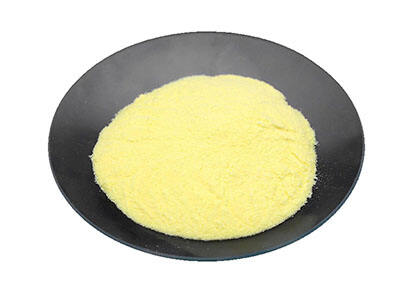Čišćenje vode od ključne je važnosti za zdravlje stanovništva, a učinkovitost tehnike u velikoj mjeri ovisi o koagulansima koji se koriste. Polialuminijev klorid (PAC) 30% istaknuo se među brojnim koagulansima na tržištu zbog svoje učinkovitosti i prilagodljivosti. U ovom radu istražuje se tehnička učinkovitost PAC-a, uključujući njegov sastav, djelovanje koagulacije i prilagodljivost promjenama pH-a u različitim izvorima otpadnih voda.
Sadržaj aluminija i mehanizmi koagulacije u prahovima polialuminijevog klorida
Prisutnost aluminija jedna je od razlikovnih karakteristika koje doprinose važnosti PAC-a 30% u procesu pročišćavanja vode. PAC je obično koagulans s većom koncentracijom aluminijevog oksida u odnosu na konvencionalne koagulanse poput aluminij-sulfata. Ova povećana koncentracija omogućuje PAC-u da stvara veće i gustoće flokule korištenjem manjih doza, što je ključno za učinkovito uklanjanje nečistoća i suspendiranih čestica iz vode.
Mehanizam koagulacije PAC-a može se objasniti time što proces ima sposobnost neutralizacije elektrostatskog naboja čestica prisutnih u vodi, čime omogućuje stvaranje floka od čestica u vodi. PAC nudi prethodno hidrolizirano stanje aluminija, što znači da se koristi u koagulaciji čim se otopi u vodi. Ova prethodno hidrolizirana svojstva znače da PAC može učinkovito raditi u širokom rasponu temperatura i smetnji, zbog čega ima jasnu prednost u odnosu na druge koagulanse koji bi mogli zahtijevati prethodnu obradu ili uslovljavanje kako bi postigli maksimalnu učinkovitost.
Osim toga, PAC proizvodi manju količinu mulja u usporedbi s drugim koagulansima, što je korisno za upravljanje otpadnim vodama. Smanjena proizvodnja mulja ne samo da snižava troškove njegova odlaganja, već i ograničava utjecaj na okoliš tijekom procesa obrade vode. Konačno, PAC ima posebnu kemijsku strukturu koja rezultira stabilnim i predvidljivim učincima koagulacije, što znači visoku kvalitetu pročišćene vode.
Prilagodljivost PAC-a pH varijacijama u komunalnim i industrijskim otpadnim vodama
Druga važna prednost PAC-a je da se može prilagoditi promjenama pH različitih otpadnih voda, pa se stoga može koristiti u širokom rasponu primjena. Sposobnost PAC-a da djeluje u širem rasponu pH vrijednosti u odnosu na tradicionalne koagulanse jamči njegovu učinkovitost bez obzira na to koristi li se za komunalne ili industrijske otpadne vode.
Učinkovitost PAC-a izuzetna je u kontekstu obrade komunalnih otpadnih voda zbog općenito blagih promjena pH koje se događaju u ovom okruženju. Otpadne vode jedne općine obično imaju prilično stalni raspon pH vrijednosti, uglavnom između 6 i 8. U takvim uvjetima PAC pokazuje dobru učinkovitost koagulacije uz značajno smanjenje mutnoće i sadržaja organskih tvari.
Industrijske otpadne vode, međutim, mogu sadržavati ekstremnije razine pH-a uslijed raznolikosti industrijskih procesa koji su izvor otpada. Fleksibilnost PAC-a posebno je važna kod nekih industrijskih otpadnih voda koje sadrže vrlo kisela ili lužnata okruženja. Činjenica da PAC može djelovati i u umjerenim kiselim i lužnatim uvjetima znači da je sposoban nositi se s različitim vrstama otpadnih voda, pružajući fleksibilnost i dosljedne rezultate čišćenja u različitim industrijama.
PAC dobiva otpornost na pH kroz svoju baznost koja je kontrolabilna kako bi se osigurala optimalna učinkovitost čak i u nepovoljnim uvjetima. To znači da PAC može postići potrebne rezultate koagulacije bez provedbe skupih postupaka podešavanja pH-a, čime se pojednostavljuje proces obrade vode i smanjuju operativni troškovi.
Zaključno, tehnički značaj polialuminij klorida 30 posto u pročišćavanju vode je njegova visoka razina koagulacije, koja je uzrokovana visokim sadržajem aluminija i specifičnim fizičkim svojstvima spoja. Zbog osjetljivosti na pH u širokom rasponu pH vrijednosti, on je fleksibilna mogućnost primjene u obradi komunalnih i industrijskih otpadnih voda. PAC se može smatrati temeljem suvremenih tehnika pročišćavanja vode, jer je zahvaljujući smanjenoj proizvodnji mulja i učinkovitom olakšanju koagulacije u različitim primjenama učinio procese upravljanja vodom sigurnijima i održivijima. Daljnja istraživanja i optimizacija upotrebe PAC-a u procesima obrade vode svakako će potkrepiti njegov nezamjenjivi položaj u zaštiti kvalitete vode u budućnosti.
 EN
EN
 AR
AR BG
BG HR
HR NL
NL FI
FI FR
FR DE
DE IT
IT KO
KO NO
NO PL
PL PT
PT RU
RU ES
ES SV
SV TL
TL ID
ID LV
LV SL
SL UK
UK VI
VI SQ
SQ HU
HU MT
MT TH
TH TR
TR FA
FA MS
MS BE
BE HY
HY AZ
AZ KA
KA BN
BN CEB
CEB






